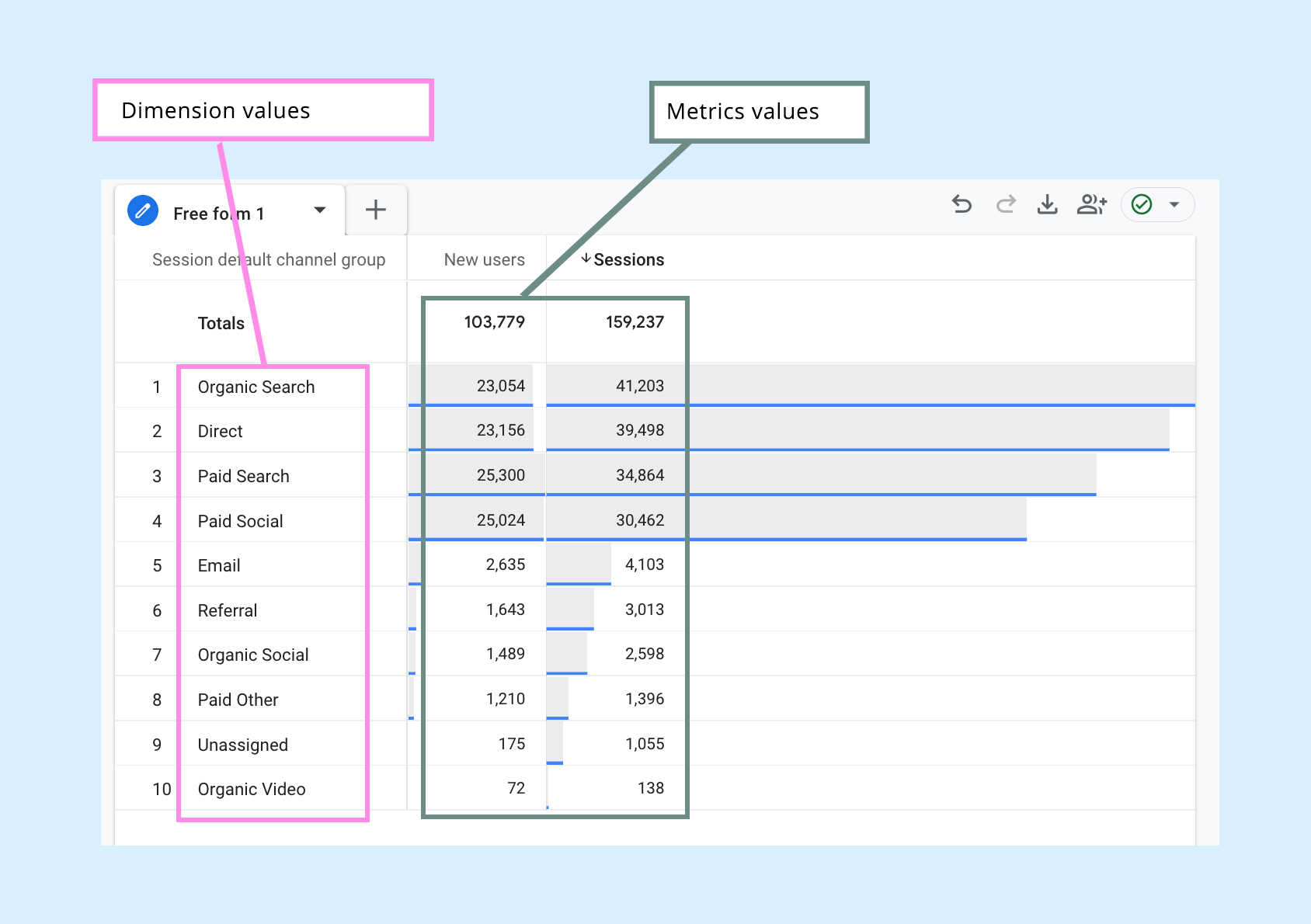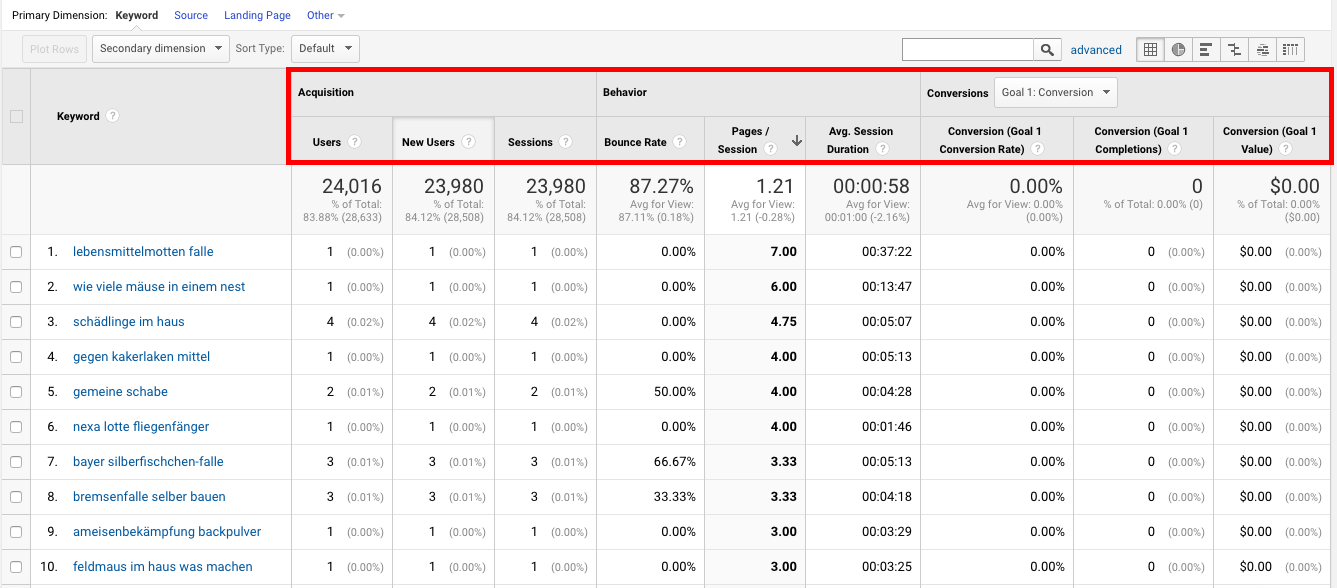Checking Out Google Analytics Secondary Dimension: Techniques and Advantages
Checking Out Google Analytics Secondary Dimension: Techniques and Advantages
Blog Article
Optimizing Your Digital Method With Secondary Dimension Analytics: a Comprehensive Guide
In the world of electronic technique, the use of secondary measurement analytics can use a profound understanding of customer actions and internet site efficiency. By diving deeper right into the layers of information past the key metrics, companies can uncover beneficial understandings that pave the means for critical decision-making and boosted performance. From deciphering the ins and outs of user interactions to fine-tuning marketing campaigns, the potential for leveraging additional measurements is large. As we browse through the complexities of this extensive overview, we are established to unravel the tactics that can reinvent electronic approaches and drive services towards unprecedented success.
Understanding Additional Dimension Analytics
Understanding Second Measurement Analytics supplies a critical understanding into the innovative analytical tools used in modern information evaluation methods. These analytics dive much deeper than key measurements, supplying an extra comprehensive understanding of data patterns and trends. By incorporating second measurements, analysts can section and filter data to uncover concealed understandings that might not appear with key analysis alone.
Secondary Dimension Analytics allows a more granular evaluation of information by introducing additional specifications that can be used to the primary dimensions - secondary dimension. This strategy permits for a much more nuanced examination of different information factors, bring about a much more complete analysis of intricate datasets
Furthermore, Second Measurement Analytics plays a significant function in improving data visualization techniques. By including secondary dimensions right into aesthetic depictions, such as graphs or charts, experts can offer information in an extra informative and comprehensive way, making it easier for stakeholders to grasp vital understandings and make informed decisions based upon the information offered.

Implementing Secondary Measurements Effectively
Using additional measurements tactically boosts the depth and precision of data analysis processes, enabling more specific understandings and informed decision-making. When implementing secondary measurements successfully, it is critical to first determine the key metrics that align with your certain objectives and objectives. By selecting one of the most relevant secondary measurements, such as demographics, behavior, or innovation, you can customize your evaluation to extract significant insights.
Furthermore, arranging and structuring your secondary measurements in a rational way within your analytics system can streamline the information interpretation procedure. secondary dimension. This involves categorizing measurements based on their partnerships and relevance to the primary metrics being evaluated. Creating personalized records or control panels that include these second dimensions can additionally assist in a more detailed understanding of user communications and actions
Moreover, routinely evaluating and adjusting your secondary measurements based upon the advancing needs of your digital technique is necessary for preserving the importance and performance of your data evaluation initiatives. By continually maximizing using second dimensions, you can maximize the energy of your analytics devices and drive educated decision-making within your company.
Studying Information for Actionable Insights

To start the procedure of evaluating information for workable understandings, it is necessary to establish clear objectives and vital efficiency indicators (KPIs) that align with the company's objectives. By specifying what success appears like for the details metrics being assessed, it comes to be simpler to recognize significant patterns and patterns that can notify decision-making.
Moreover, utilizing devices such as division and contrast evaluation can provide additional context to the data, enabling more nuanced insights to be attracted. By damaging down data into smaller sized, more manageable subsets, organizations can uncover try this site hidden chances and areas for enhancement that might not appear when checking out the data all at once.
Optimizing Digital Technique With Findings
Enhancing digital strategies via workable insights obtained from information evaluation is important for achieving ideal efficiency in today's competitive landscape. When valuable findings have actually been extracted from the data, the following action is to utilize these understandings to optimize digital strategies efficiently. One key facet of this optimization procedure is the identification of trends and patterns that can lead decision-making and resource allotment.
By assessing the data findings, businesses can identify locations of strength and weakness within their electronic approach. This information can after that be made use of to fine-tune marketing projects, improve customer experience, and drive general efficiency enhancement. If the information discloses a particular demographic team that is very engaged with specific types of web content, services can customize their strategies to far better target and cater to this target market sector.
Furthermore, optimizing digital technique with searchings for also includes constant monitoring and analysis to guarantee that the implemented changes are producing the desired results. By iteratively improving methods based upon data-driven insights, organizations can remain in advance of the competition and adjust to the dynamic digital landscape successfully.
Determining Success and Iterating
Gauging success in electronic method implementation involves evaluating key efficiency indications to evaluate the effectiveness of approaches and techniques deployed. This examination is crucial in identifying the influence of the digital campaigns on the overall service objectives. By tracking metrics such as web site web traffic, conversion rates, click-through prices, and engagement levels, businesses can assess the performance of their digital projects and make data-driven choices for enhancement.
As soon as the data has been collected and analyzed, it is vital to iterate on the approaches based on the understandings got. This repetitive process entails making adjustments to the electronic strategies to enhance performance continuously. By determining what is functioning well and what needs improvement, companies can refine their electronic strategy to improve outcomes. This cyclical approach of measuring, analyzing, and iterating is basic to making the most of the performance of digital efforts and making sure that they align with the company's purposes and objectives. Eventually, continual monitoring and refinement are vital to remaining competitive in the he said ever-evolving electronic landscape.
Final Thought
In conclusion, incorporating second measurement analytics into your electronic strategy can boost and give valuable understandings decision-making. By efficiently executing and assessing information, companies can enhance their electronic strategies for success. It is vital to continually measure success, make necessary modifications, and iterate on the method to remain competitive in the electronic landscape. Making use of secondary measurement analytics is a powerful tool for making the most of the influence of your electronic efforts.
Comprehending Additional Dimension Analytics provides a vital insight right into the advanced logical tools used in contemporary data analysis practices. These analytics dig much deeper than main measurements, offering a much more comprehensive understanding of data patterns and trends. By incorporating second dimensions, analysts can segment and filter information to discover surprise insights that may not be apparent with primary evaluation alone.
Using second dimensions tactically improves the depth and accuracy of information evaluation processes, enabling for extra exact insights and notified decision-making.In addition, organizing and structuring your additional measurements in a sensible fashion within your analytics platform can enhance the information analysis procedure.
Report this page